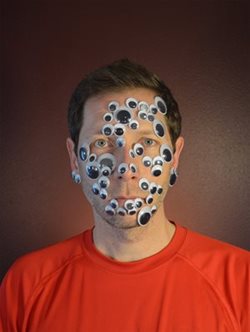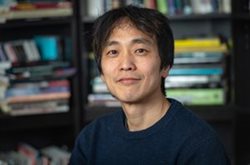Heads in the Cloud

a Discovery Core Experience
BCORE 104 (Arts & Humanities)
About This Course
New technology is changing the ways we think, understand, remember, love, politic and play. Heartbeats can now be sent from one watch to another. Brainwaves can be used to control video games. Our phones know where we are, and often, remind us of things we have forgotten—or things we didn’t even know yet. We are surrounded by data, virtual signals and quantum particles— but also by creative forms of expression, activism and communication. The stakes of technological engagement have never been more present than our zoomed-out life in the past year, with stay-at-home orders and a general anxiety about being “too close” to other people. Technology has been the answer, but it perhaps also has created new challenges. n.
Why Should I Take This Course?
The term “heads in the clouds” used to be reserved for the romantic dreamer who lived life without really noticing the nuances that happened around them. Not any more. Now we all have our heads in the cloud in one way or another. It is no less a dream, except that it is also very real, our heads immersed in the technologies of daily living. If you Instagram or Snapchat you certainly have something of the cloud in your mind, but so too if you online bank or shop, or Google or map or—let’s be honest—just about anything we do is mediated and mitigated by technology in some way. But the important question is: so what? Is our technological environment simply the new architecture of life or are there creative ways to think and rethink our possibilities for engagement? This class doesn’t judge technology but does ask you to think about and map out what it means to be an individual living in technological community. If that’s a question that matters to you, this class will give you a chance to learn more about your own ways of engaging with technologically-mediated life.
What Will I Study?
This class invites you to put your head in the clouds—thinking about the complexities and possibilities of the technological landscape. Together we will think about what it means to map the relationships of art, technology, visualization, and space, focusing on new digital art and spatial technologies that provide us with unprecedented possibilities for representing and imagining the world around us, and how they can be productive and revealing. You will learn how artistic practices can be integrated with the critical geographic imagination, and will have a chance to produce creative works in artistic and visual forms. The class aims to open up an interdisciplinary way of questioning our experiences of the world, by exploring ways of mapping and imagining them.
Selected Projects & Activities
You will take photographs of people wearing tinfoil hats (and maybe one of yourself too!). You will draw a picture using a GPS app. You will try to capture Pokémon. You will attempt to exhaust a place. You will work in groups to notice places where (you watch) you are being watched—and try to find ways to creatively look back. You will imagine yourself as a bat. In each case you will be asked to also submit a short-written reflection on your ideas, process, and outcomes.
Professor Ted Hiebert (he/him/his)
School of Interdisciplinary Arts & Sciences

Teaching
Ted Hiebert is Professor of Interdisciplinary Art and Director of the MFA in Creative Writing & Poetics at UW Bothell. He is a practicing artist and a thinker of technology and the imagination. He writes books and essays about nonsense, dreams, ambiguity and other irrational and creative ways of engaging the world. BFA in Visual Art (University of Victoria); MFA in Art (University of Calgary); PhD in Interdisciplinary Humanities (Concordia University).
Contact
- Office: UW1-133
- Email: thiebert@uw.edu
- Website: www.tedhiebert.net
I believe in the merit of interdisciplinary practice and research -coupling artistic engagement with the cultivation of critical skills needed for sustainable creative inquiry.
Professor Hiebert
Professor Jin-Kyu Jung (he/him/his)
School of Interdisciplinary Arts & Sciences

Teaching
Jin-Kyu Jung is an Associate Professor in the School of Interdisciplinary Arts and Sciences at the UW Bothell. He is an urban geographer/planner whose interdisciplinary research program contributes to critical, qualitative and creative possibilities of GIS and geographic visualization in understanding socio-spatial processes and politics of urban space in an engaged way. BA in Urban Engineering (Pusan National University, Korea); MUP in Urban Planning and PhD in Geography (State University of New York at Buffalo).
Contact
- Office: UW2-226
- Phone: 425-352-3724
- Email: jkjung5@uw.edu
Teachers, students, and communities should teach and learn from each other, and always need to have a mutual respect.”
Professor Jung